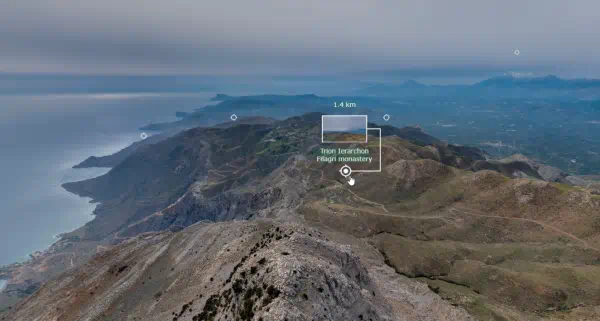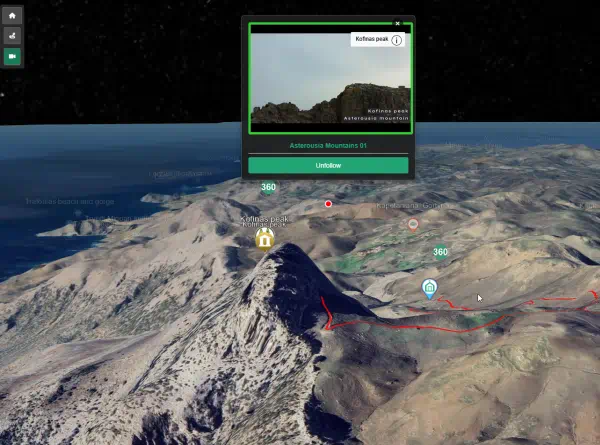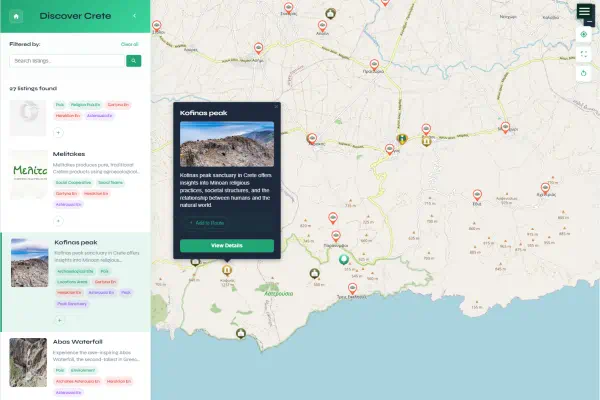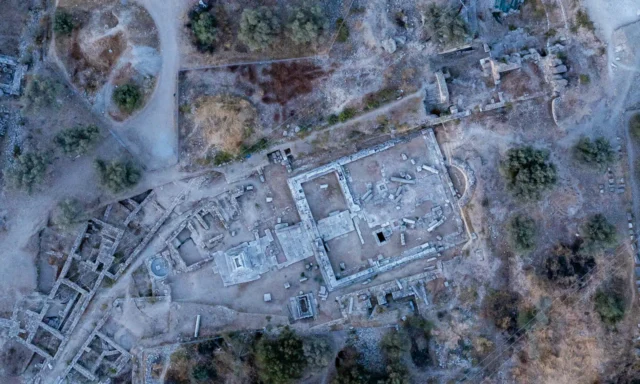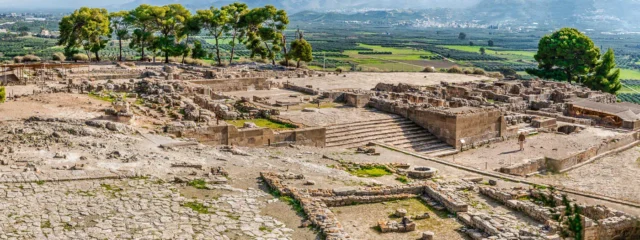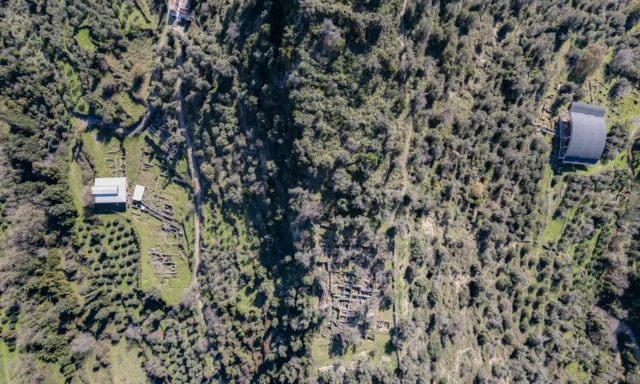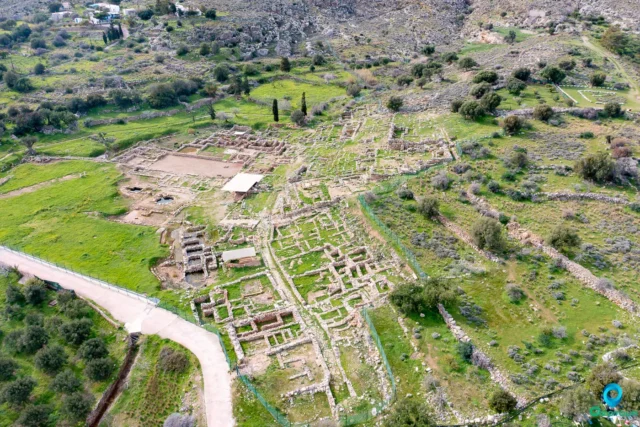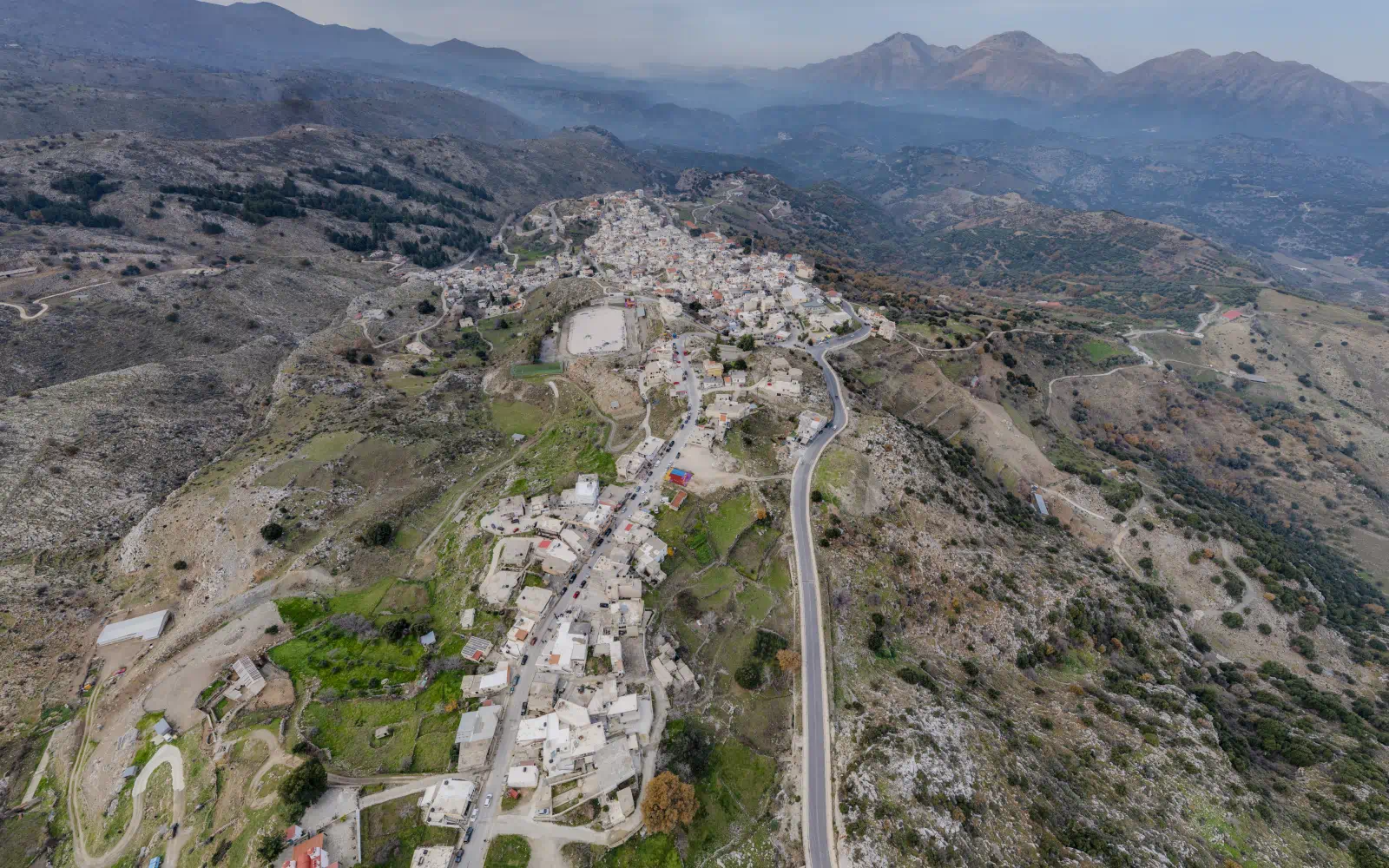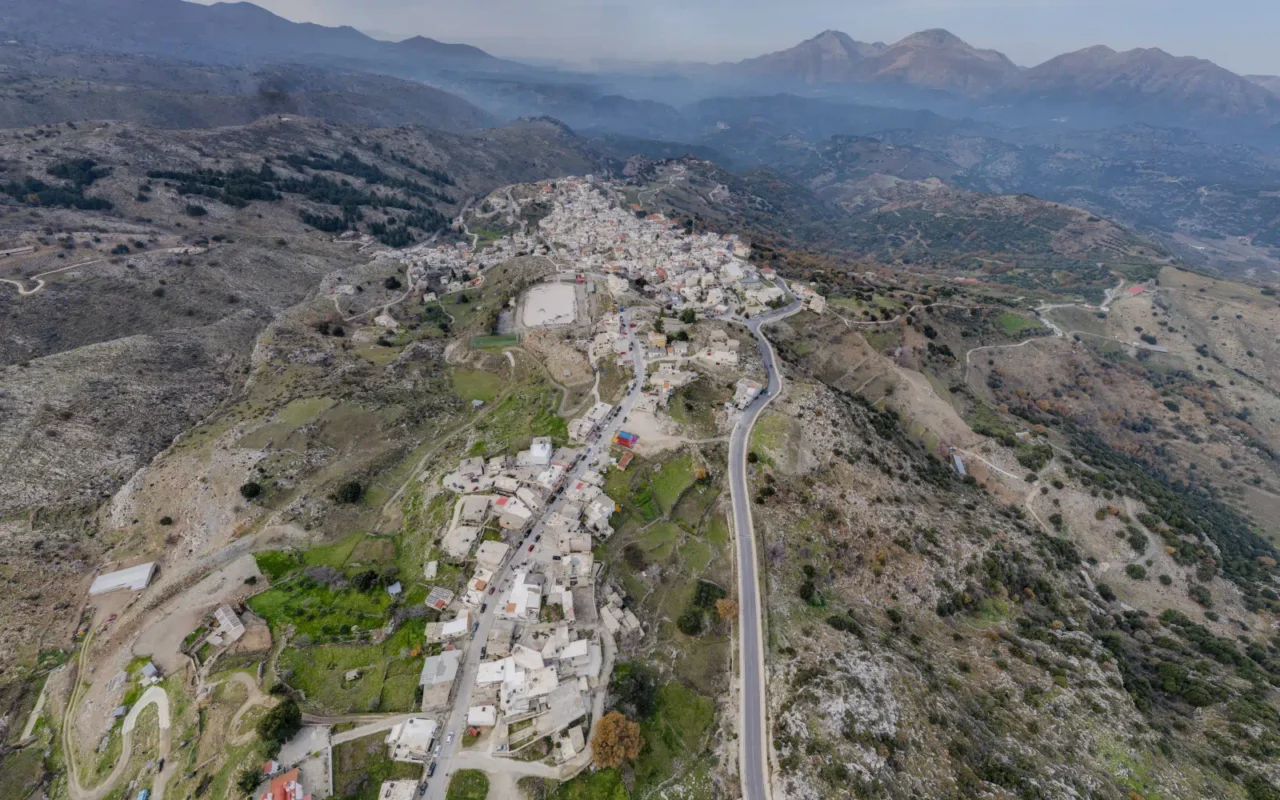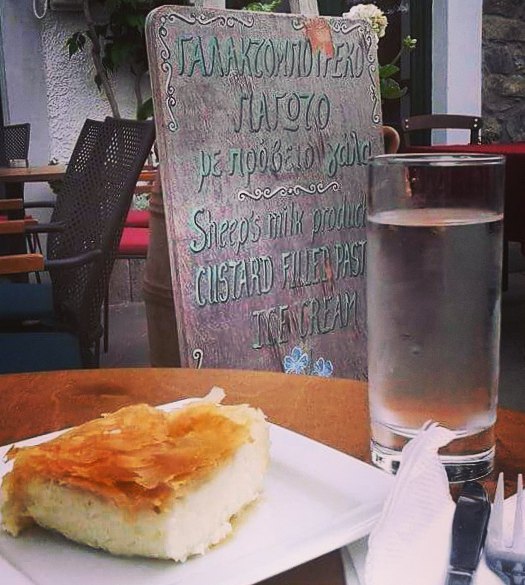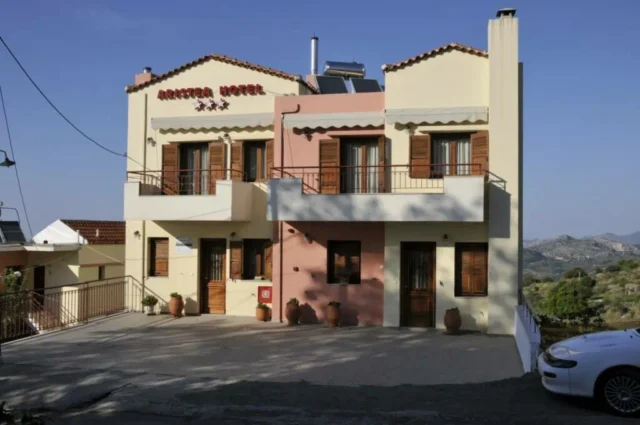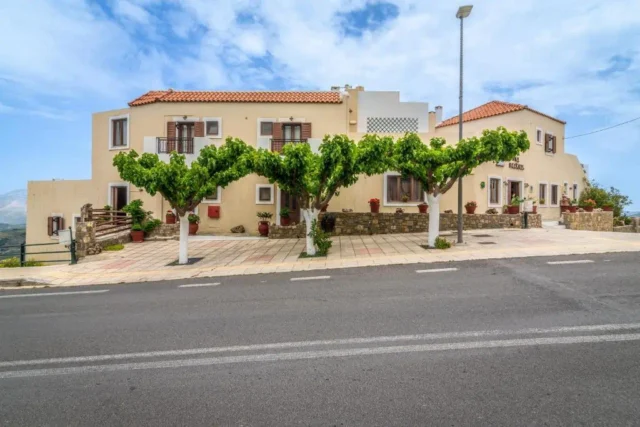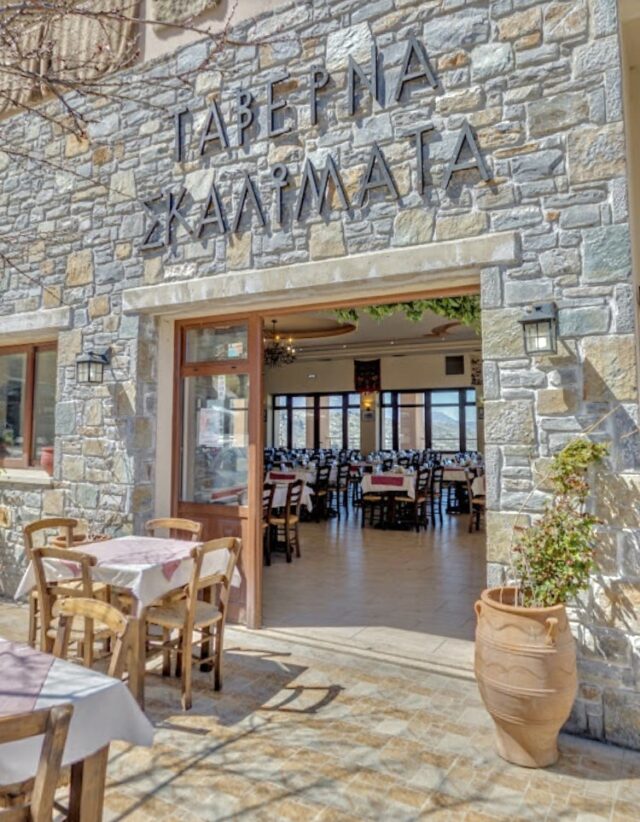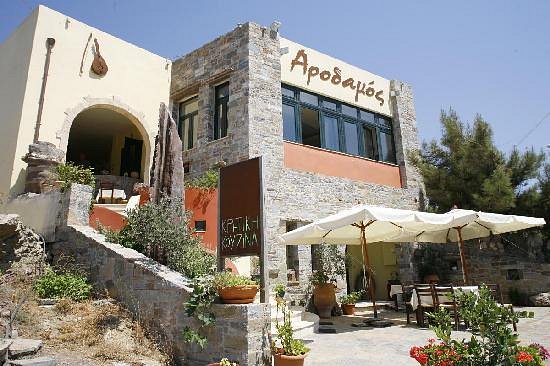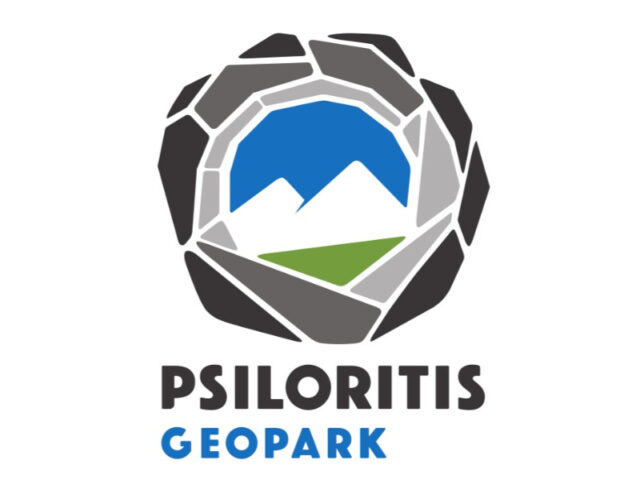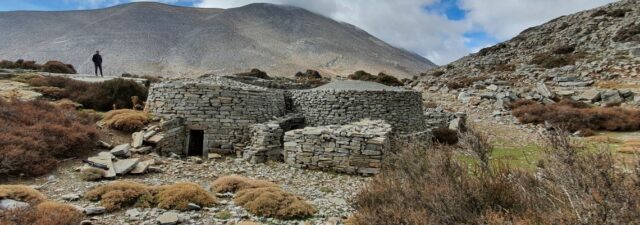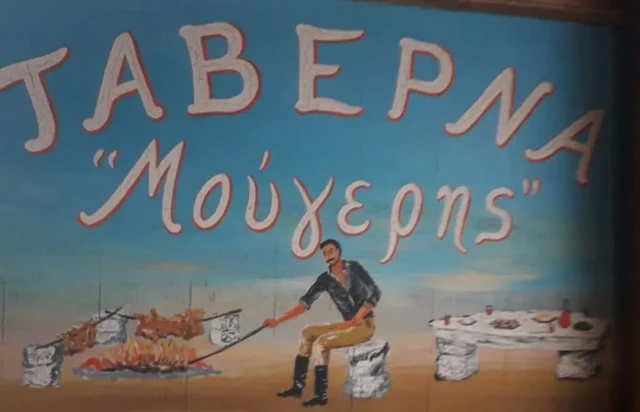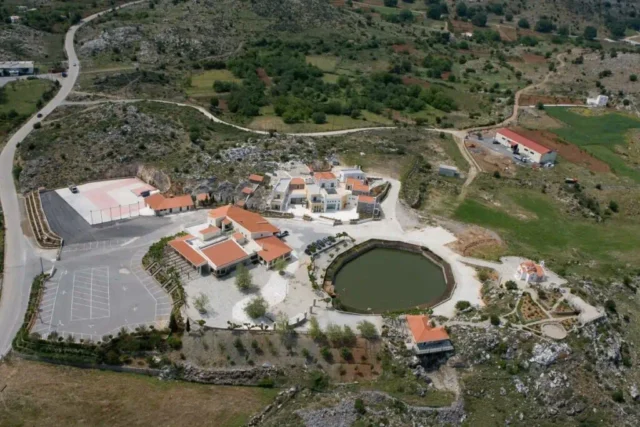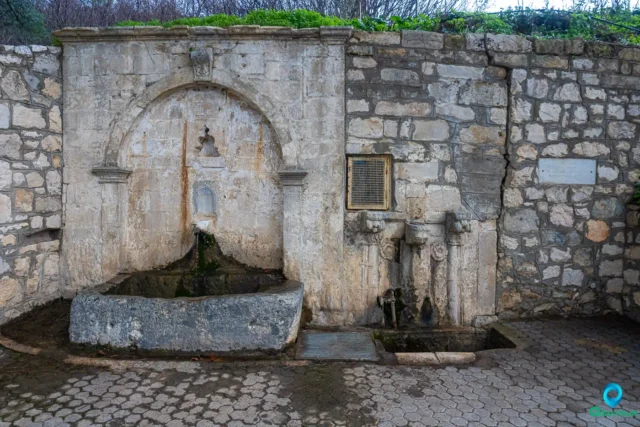Located high on the northern slopes of Mount Psiloritis, Crete’s highest peak, the village of Anogia is a symbol of the Cretan spirit, known for its independence, distinct culture, and history of defiance. Situated at an elevation between 700 and 790 meters, its name comes from Ano-gia (Ανω-γειά), meaning “upper land” or “high place,” reflecting its connection to the mountain landscape that has influenced its history. This location is important for understanding Anogia’s past. The mountainous terrain served as a defense, providing shelter to residents and resistance fighters and making control difficult for occupying forces like the Ottomans and Germans. This isolation also helped preserve unique cultural features, including a dialect, music, and customs.
Anogia’s history involves repeated resistance, destruction, and rebuilding. It is known as a center of revolution, especially during Ottoman rule and World War II. This commitment to freedom resulted in significant hardship. The village was destroyed three times in 122 years: by Ottoman forces in 1822 and 1867, and by German occupiers in 1944. These events show Anogia’s consistent resistance. This repeated trauma created a strong community identity focused on survival, memory, and perseverance, leading to its designation as a “Martyred Village”. Its history demonstrates resilience against difficult circumstances, showing a community that rebuilt after destruction and protected its culture.
Origins and Early Centuries
Origins and Ancient Connections
The exact origins of Anogia are unclear due to a lack of historical documents. Local tradition describes its founding through a story involving religion. According to legend, a shepherd from Axos, near the ancient Minoan city of Oaxos, found an icon of Saint John the Baptist on Mount Psiloritis. He took the icon home, but it returned to the spot where he found it the next day. Seeing this as a sign, the shepherd and others built a church for Saint John the Baptist there. This church is thought to be the starting point for the settlement of Anogia. Byzantine wall paintings from the 11th century in the Church of Saint John support this timing, indicating worship and settlement before later records.
Although Anogia’s recorded history starts later, its location is in an area with thousands of years of human activity and mythology. It is near the Ideon Cave (Ideon Antron), an important site since ancient times (around 4000 BCE), known in mythology as the place where Zeus was raised. Also nearby are the Minoan palace and settlement of Zominthos, a key mountain economic center in Minoan times, and the spring of Agia Marina. While not directly linked to these ancient sites, Anogia is in a region influenced by Crete’s long history and mythology.
Byzantine and Venetian Eras
Historical records show Anogia existed during the Second Byzantine period (961-1204 AD), before the Venetians arrived. An important event happened in 1182 after the Byzantine reconquest, when Crete was divided among twelve noble Byzantine families. Anogia was given as a fiefdom to the Phokas family, later called the Kallergis. This grant gave the village the title “Vasilika Anogeia” (Royal Anogeia), indicating its status under these owners. This title shows a feudal structure and outside control at that time.
Under Venetian rule, which started after the Fourth Crusade (around 1212) and ended with the Ottoman conquest, Anogia continued to grow. By the late 16th century, it was a notable settlement. Venetian records from 1583 mention it, and a 1593 census listed 911 residents, a large number then. Although Cretans often rebelled against Venetian rule, especially in areas like Sfakia, Anogia was not known for rebellion during this time. This contrasts with its later reputation. Being a “royal” fiefdom under the Kallergis and its isolation might not have led to ongoing submission. Instead, this period might have allowed a strong local identity and independence to develop, contributing to later resistance against Ottoman and German occupiers. The title “Vasilika Anogeia” is therefore interesting when compared with the village’s later identity as a center of resistance.
Under Ottoman Rule: Privileges and Rebellion (1648/1669 – 1898)
Ottoman Conquest and Special Status
The Ottoman Empire took control of Crete during the Cretan War (1645–1669), ending with the capture of Candia (Heraklion) after a long siege. Anogia was conquered around 1648. After the conquest, the village received a special status. It became a “vakuf” (Turkish: vakıf), a religious property dedicated to the Valide Sultan, the mother of the Sultan. This status usually gave residents special benefits, possibly including tax breaks or less government interference.
The Rise of a Revolutionary Center
Despite these benefits, Anogia became a major center for revolution during the difficult centuries of Ottoman rule. Its mountain location likely contributed, making Ottoman military control harder and offering shelter for rebels. The residents became known for taking part in almost all major Cretan revolts against Ottoman rule.
Anogia’s part in the fight for freedom included important victories and harsh punishments:
Greek War of Independence (1821) and Aftermath: In May 1822, during the Greek War of Independence, Anogian fighters led by Vassilis Sbokos won a significant battle against Ottoman forces at Sklavokambos. However, this led to quick and severe retaliation. Serif Pasha led an expedition that caused the first destruction of Anogia later that year.
The Great Cretan Revolt (1866–1869): Anogia played a large role in this major revolt. A meeting to choose representatives for military leaders took place in the village just before the revolt started. Anogians fought; three men from the village died during the defense of the Arkadi Monastery in November 1866, an event that gained attention in Europe and symbolized Cretan resistance. That same month, Anogians and others from Mylopotamos successfully fought off an attempt by Resit Pasha to capture the village.
The Second Destruction (1867): Resistance continued, but the Ottomans won the larger conflict, often with help from Egypt. In 1867, Ottoman forces under Omer Pasha captured Anogia. Later that year, in November, Resit Pasha returned and ordered the village burned down for the second time, only 45 years after the first destruction.
Cretan Revolt (1897–1898): Anogians took part in this last major revolt against Ottoman rule, which resulted in intervention by the Great Powers and the creation of the autonomous Cretan State in 1898, an important move toward union with Greece.
Having special privileges as a vakuf village while also being a center of revolution creates a complex situation. It brings up questions about the relationship between the village and Ottoman authorities. Did Anogians use their special status and relative independence to organize resistance more effectively? Or was the Ottoman government unable to control the remote mountain areas, allowing both the special status and the revolts to continue together? This uncertainty highlights the complicated and often opposing relationship between Anogia and the empire, indicating that resistance included not just fighting but possibly also careful dealings with the ruling system.
Additionally, Anogia’s involvement in defending the Arkadi Monastery is especially important. The “Holocaust of Arkadi” was the key event of the 1866-1869 revolt, attracting international attention and support for the Cretan situation. By sending fighters and sharing in the events at Arkadi, Anogia connected its own story of hardship and resistance to this crucial moment in the larger Cretan fight for freedom, reinforcing its identity as a place of revolution.
The Three Destructions of Anogia
Year |
Occupying Power |
Trigger Event / Context |
Key Perpetrators |
Consequence |
1822 |
Ottoman Empire |
Victory at Sklavokambos / Greek War of Independence |
Serif Pasha |
Razing / Massacre (1st) |
1867 |
Ottoman Empire |
Participation in Great Cretan Revolt (1866-69), incl. Arkadi |
Resit Pasha |
Razing / Massacre (2nd) |
1944 |
Nazi Germany |
Kreipe Abduction / Center of Resistance Activities |
Gen. Friedrich Müller |
Razing / Massacre / Executions (3rd) |
WWII Resistance and Sacrifice (1941-1944)
The Battle of Crete and Rise of Resistance
The German invasion of Crete in May 1941 (Operation Mercury) was a significant event, being the first major airborne attack in history. German paratroopers and glider troops aimed for key airfields but met strong resistance from Allied forces (British, Commonwealth, Greek) and the Cretan population. Although the Germans captured the island, they incurred heavy losses – possibly more than in the entire previous Balkan campaign. This high cost discouraged Hitler from attempting similar large airborne attacks later in the war.
The following German occupation was very brutal, a response to the islanders’ strong resistance. Executions without trial, village destructions, and massacres became frequent. In this environment, Anogia quickly became known as a center of resistance. In 1941, the ‘Liberation Action Committee’ was formed there, showing commitment to organized resistance early on. Anogia became a key part of the Cretan Resistance, acting as a base for guerrilla fighters (andartes) and British intelligence operations by the Special Operations Executive (SOE). SOE agents like Patrick Leigh Fermor spent much time in the Cretan mountains, often dressed as shepherds, organizing and helping the resistance with essential support from local people.
The Abduction of General Kreipe (April-May 1944)
One of the boldest resistance actions during the occupation was kidnapping the German commander of the 22nd Air Landing Division. SOE officers Major Patrick Leigh Fermor and Captain W. Stanley Moss planned and led the operation. Their first target was the division’s previous commander, General Friedrich-Wilhelm Müller, known for his brutality, but Major General Heinrich Kreipe replaced him just before the operation began. The team continued with Kreipe as the target.
On the night of April 26, 1944, near Knossos, the SOE team, dressed as German military police and helped by Cretan resistance fighters like Georgios Tyrakis and Emmanouil Paterakis, stopped Kreipe’s car. They captured the General, disabled his driver, and drove the car through many German checkpoints in Heraklion, using Kreipe’s known impatience at roadblocks to pass without inspection. They later left the car and started a difficult journey on foot across the island’s mountains to a meeting point on the south coast, guided and hidden by Cretan partisans. Anogia, already a center of resistance, was involved in this escape, acting as a stopping place for the group. The operation’s success depended on the bravery, local knowledge, and help of many Cretans, including Anogians, who took great risks. Knowing the potential for harsh punishment, Leigh Fermor left a letter in the car stating the operation was done only by British forces without local aid, trying to protect civilians. However, this effort failed because the occupiers were determined to punish resistance.
The Third Destruction: The Razing of Anogia (August 1944)
Retaliation for Anogia’s consistent resistance, particularly its connection to the Kreipe abduction, was quick and harsh. On August 13, 1944, General Friedrich Müller, then Commander of Fortress Crete, known as “The Butcher of Crete” (later executed for war crimes), issued a direct order. The order stated:
“Because the town of Anogia is the center of the English Intelligence on Crete, because the people of Anogia committed the murder of the Sergeant Commander of the Yeni-Gave, as well as of the garrison under his orders, because the people of Anogia carried out the sabotage of Damasta, because in Anogia the guerrillas of the various resistance bands find refuge and protection, because the abduction of General Kreipe was carried out through Anogia… WE ORDER THE COMPLETE DESTRUCTION of Anogia and the execution of every male Anogian who happens to be within the village and around it within a radius of one kilometre.”
The documented order shows the planned nature of the punishment. While the Kreipe abduction was a main reason given, the Germans also listed other resistance actions based in Anogia. This indicates that although the kidnapping might have been the immediate cause, Anogia was targeted for destruction due to its ongoing resistance, as part of a larger German plan to suppress the Cretan resistance through fear.
Müller’s order was carried out with organized brutality. Three German battalions surrounded the village. They arrested about 80 older men and sent them to Heraklion. At least nine disabled men who couldn’t escape were executed immediately, and some reports mention a wider killing of males found in the area. Six older disabled women were reportedly burned in their homes. Most other residents, warned or seeing what was happening, managed to escape into the safety of Mount Psiloritis. For almost three weeks, from August 13th to the end of the month (some sources say 23 days), German soldiers looted and destroyed Anogia methodically. Every house (around 800), schools, and other buildings were dynamited and burned, leaving only ruins. The destruction was complete, intended to remove Anogia and stop future resistance. Between 1941 and 1944, 104 Anogians died fighting the German occupiers. This third destruction shows the terrible price Anogia paid for its independence and its key role in the Cretan Resistance.
Post-War Reconstruction and Identity
Rebuilding Anogia
After the destruction of World War II, the people of Anogia had the huge job of rebuilding their village completely from ruins. This was not the first time the community faced such a difficult situation. Remembering and recovering from the Ottoman destructions in 1822 and 1867 probably contributed to their strong collective resilience and resolve. Returning and rebuilding homes, infrastructure, and community life after the 1944 destruction showed great endurance. In 1946, the Greek state recognized the village’s sacrifices and bravery during the occupation by awarding Anogia the War Cross, First Class. This award recognized the suffering during WWII and the village’s long history of struggle and refusal to surrender.
Memory, Martyrdom, and Identity
The shared experience of repeated destructions, especially the planned brutality of the 1944 razing, greatly influenced Anogia’s post-war collective memory and identity. The village became a strong symbol of suffering and resistance, a place with deep historical memory. This status was officially recognized when it was included in the network of “Martyred Villages and Cities of Greece” from the 1940-1945 period, sometimes called “Greek Destructions”. The memory of the third destruction is maintained through annual events around mid-August, including speeches, music, dance, and plays, often held in village squares or the Nikos Xylouris open-air theatre. A large monument in Agios Ioannis square shows a Cretan warrior in traditional clothes. Its inscription lists the dates of the three destructions – 1822, 1867, and 1944 – acting as a constant reminder of the village’s long fight for freedom and its cost. Anogia’s identity is therefore tied not just to resistance but also to ongoing remembrance and the strength needed to rebuild over generations.
Anogia’s Enduring Culture
Despite, or possibly because of, its difficult history, Anogia has developed and maintained a unique cultural identity that makes it distinct, even within Crete. This cultural identity is seen in its well-known musical traditions, detailed folk arts, unique dialect, and the lasting impact of its shepherding lifestyle. This continuation of culture can be seen as a form of resistance—a way of maintaining identity against occupation and assimilation, ensuring survival beyond just rebuilding physically.
Music, the Lyra, and Known Musicians
Anogia is recognized across Greece as an important source of Cretan traditional music. Key to this tradition is the Cretan lyra, a pear-shaped, three-stringed instrument played with a bow while held upright on the lap. It comes from the medieval Byzantine lyra (likely brought to Crete around the 12th century) and has a unique sound, partly because players use their fingernails on the side of the strings instead of pressing them on a fingerboard. The lyra usually carries the main melody, often joined by the laouto (Cretan lute) and sometimes the mandolin, daoulaki (drum), or askomandoura (bagpipe). Cretan music often features complex rhythms (like 7/8 or 9/8) and improvisation, and is known for a direct, strong quality that reflects the island’s landscape and history.
Anogia, specifically, has produced many influential lyra players and singers who have mastered the tradition and influenced its development.
Key Cultural Figures of Anogia
Name (Nickname) |
Field |
Key Contribution / Significance |
Nikos Xylouris (Psaronikos) |
Lyra / Vocals |
Iconic singer, “Archangel of Crete,” brought Cretan music to national/international fame, symbol of resistance against Junta (1967-74). House is a museum. |
Antonis Xylouris (Psarantonis) |
Lyra |
Nikos’s brother, known master & innovator, connects music to myth/nature, internationally recognized experimental traditionalist. |
Vasilis Skoulas |
Lyra / Vocals |
Well-known contemporary lyra player and singer from Anogia. |
Alkiviadis Skoulas (“Grillios”) |
Wood Carving |
Known for original wood carvings using natural shapes, naive painting style. Work displayed locally. |
Loudovikos ton Anogion |
Music/Songwriting |
Known artist associated with Anogia. |
The most famous of these is Nikos Xylouris (1936-1980), known as Psaronikos. Born in Anogia, he grew up during the difficult years of German occupation and the poverty that followed. He learned the lyra young and later moved to Heraklion for a music career, first finding it hard as city preferences moved from traditional music. However, his strong voice, stage presence, and connection to Cretan music eventually earned him wide recognition and the title “Archangel of Crete”. During the Greek military junta (1967-1974), Xylouris’s music, often about freedom and resistance, became a strong symbol of opposition throughout Greece. His early death from cancer in 1980 at 43 surprised the country, but his influence continues. His former home in Anogia is now a museum honoring his memory and contribution.
Nikos’s younger brother, Antonis Xylouris, known as Psarantonis (born c. 1939-1943), is also a major figure in Cretan music. A highly skilled lyra player, Psarantonis is respected for his traditional yet very innovative and often improvised style. His music is described as fundamental and expressive, influenced by ancient mythology, the Psiloritis landscape, and nature sounds, resulting in performances that seem both old and immediate. He is internationally known, working with artists like Nick Cave and playing at festivals globally, representing the active, changing nature of Cretan music.
The Xylouris family’s story reflects Anogia’s story. Their lives show the village’s link to the land, the impact of historical events (Nikos living through the occupation), the resistance spirit (Nikos opposing the Junta), the strong traditional roots, and the artistic activity that continues today.
Music is still central to life in Anogia. Traditional music is played during summer concerts in the open-air theatre and at festivals, especially in early August. Cultural events organized by the local club draw visitors from all over Greece. Music is often accompanied by mantinades – improvised, rhyming couplets with 15 syllables, usually about love, satire, politics, or freedom, sometimes performed as exchanges between singers. This is not just history; the tradition continues, with many young people in Anogia learning the lyra and taking part in music and dance.
Weaving, Folk Art, and Attire
Women in Anogia have long been known for their weaving skills, making high-quality traditional Cretan textiles with complex designs. This craft is so important that Greece’s first women’s cooperative was founded in Anogia, focusing on this tradition. Visitors can buy these weavings in local shops. Other folk arts continue, including the unique wood carvings by Alkiviadis Skoulas (“Grillios”), whose work using natural branch shapes can be seen in a local display. Anogia’s visual character also includes traditional Cretan clothing, especially the typical boots (stivania) and black shirts often worn by men, particularly shepherds and older men, or for festivals and events.
Anogian Dialect and Customs
Anogia’s isolation has helped preserve a distinct local dialect, different even from other Cretan dialects. This dialect is known for keeping words from ancient Greek and for a specific pronunciation, especially of “lambda” (λ) and “rho” (ρ) sounds. Besides language, Anogians have unique local customs and social structure. They are generally known for hospitality, often offering visitors raki (a strong Cretan drink) and local food, usually in the social setting of the village kafeneia (coffee houses).
Shepherding Life: Economic Base and Cultural Influence
For centuries, raising livestock, mainly sheep and goats on the slopes of Psiloritis, has been the main part of Anogia’s economy and its way of life. This activity is large-scale, with estimates of over 80,000 sheep and goats cared for by shepherds in the Psiloritis area. Historically, this work was done in very hard conditions, including poor soil, difficult winters, and the threat of problems from occupiers, resulting in considerable poverty, as noted by 19th-century visitors like Victor Bérard.
This long-standing connection to shepherding has greatly influenced Anogia’s identity and character. The resilience, independence, and detailed knowledge of the mountain needed for this life are traits often linked to Anogians. Shepherds, knowing the land well, were often central to resistance movements, and their cultural impact is widespread. Acknowledging this connection between work and identity, the shepherding practices of Psiloritis, particularly around Anogia, are officially recognized as an Intangible Cultural Heritage of Greece.
Anogia Today
While this description mainly covers Anogia’s history, a look at its current situation shows the continuing influence of its past. Today, the village keeps its separate neighborhoods (Armi, Mesochorio, Perachori, Metochi, Synoikismos) and a separation between the older, lower area and the newer parts built higher up. Its population was 2,449 in the 1981 census, and recent estimates place it around 2,500 permanent residents.
Traditional work, especially raising livestock, continues alongside modern economic activities. Agricultural vehicles are often seen on village streets. Importantly, there is an intentional effort to maintain the cultural heritage that characterizes Anogia. Music is still active, with summer festivals and concerts attracting people, and the lyra tradition is taught to younger people. Women continue weaving, and annual remembrances make sure the village’s history of sacrifice and resistance is remembered.
Anogia shares its unique history and culture with visitors through museums like Nikos Xylouris’s house, cultural events, and shops selling traditional crafts. This creates a modern challenge found in many places with significant heritage: how to balance preserving authentic traditions, developed over centuries of difficulty and resistance, with the effects of tourism. How Anogia handles this, maintaining its character while being open to visitors, is part of its current story, influenced by the history described here.
Conclusion
The history of Anogia shows endurance related to the landscape of Mount Psiloritis. From its early origins and its time as a Byzantine fiefdom, the village developed a distinct identity that shaped its experiences during centuries of foreign occupation. Under Ottoman rule, even with special privileges, Anogia became a center of rebellion, frequently resisting authority and suffering repeated destruction and rebuilding. This resistance peaked during the Nazi occupation of World War II, when Anogia was a key center for the Cretan Resistance, resulting in its almost complete destruction in 1944 – the third major destruction in its history.
However, Anogia’s story is not only about hardship and conflict. It is mainly a story of great resilience. The village’s repeated rebuilding after destruction demonstrates the strong character of its people. This resilience is closely linked to maintaining a unique and active culture. The distinct melodies of the Cretan lyra, represented by figures like Nikos Xylouris and Psarantonis, the complex designs of traditional weavings, the continuation of a local dialect, and the routines of shepherding life are not just historical items but active parts of Anogia’s identity, developed in isolation and protected through difficult times. For Anogia, culture became a way to resist, maintain identity, and ensure survival against forces aiming for its destruction.
Anogia’s legacy extends beyond its location. It is a strong symbol of the Cretan character – proud, independent, connected to its traditions and its mountain setting. The connection between its past difficulties and its present nature is a clear reminder of human resilience and the importance of cultural identity when facing historical challenges. Its history continues to influence the Anogia of today and informs understanding of human strength.
Village Key Points
-
Historical References: First mentioned in 1583, Anogeia has a long history of resistance against conquerors.
-
Location: Situated on the Armi ridge of Mount Psiloritis at an elevation of 730 meters.
-
Population of Anogeia
YearPopulationNotes158391118811973Christians190023631920237219282904194029691951258119612461197127501981244919912223200124542011232220212201 -
Historical Significance: Known for its strong resistance against various occupiers and its role in the Cretan Revolt and World War II resistance.
-
Current Status: A town with a strong cultural identity, preserving traditions like shepherding and weaving.
References
Manousos, O. N. (2006). Oi Palaioi Anogeianoi. Athens: Aeolos.

